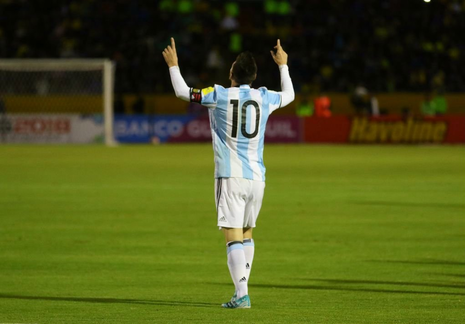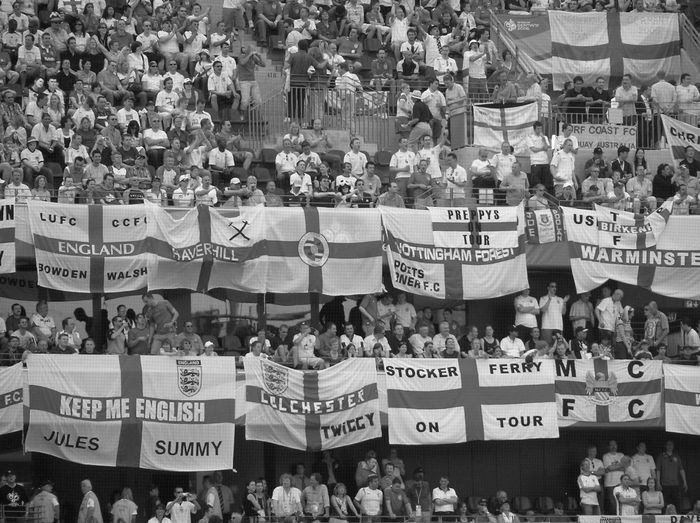Looking back on Copa América and Messi’s long-awaited international trophy
After a tournament somewhat overshadowed by the Euros, Damola Odeyemi reviews the Copa América and what the result means for Lionel Messi

At 1 AM, early Sunday before last (11/07), when most people were sound asleep and European football was seemingly several hours from making the wrong decision as to where to call home, I sat down in front of a TV to find out where South American football was going to reside for the next three years. Would it stay in Brazil, or would Lionel Messi win his first international title? The 2021 Copa América, hosted by Brazil, certainly did not attract the same level of attention as the concurrent Euro 2020. In addition to the fact that the time difference means matches were played in the small hours of the day, the English, rightfully had other, more pressing matters to attend to. However the Argentinians have, after a 28-year wait, now won a major title with Messi at the helm.
The Copa América has been an entertaining tournament with an average of 2.32 goals per game, albeit slightly inferior to the 2.8 average for the Euros. The tournament was also formatted differently to the Euros. Ten nations qualify, and they are split into two groups of five for the group stage, with the top four teams in each making it into the quarter finals. Brazil and Argentina won their respective groups with 10 points each, setting themselves up for an eventual meeting in the final. Argentina cruised past Ecuador, 3-0 courtesy of two assists and a goal from Messi, and creeped past Columbia on penalties in the semi-final after drawing 1-1 at full time. Brazil, on the other hand, had a much less sensational run to the final, efficiently beating both Chile and Peru in consecutive 1-0 affairs. The final was a cagey affair; tensions were running high all the way through and there was no real rhythm to the game. Argentina, though the better side, needed a moment of magic from De Paul in the form of an excellent ball over the top followed by a sublime lob over the goal keeper by Di Maria, who won the Man of the Match award.
The lack of fan participation
The final was the only match in the whole tournament where fans were allowed in the stadiums, although the Maracana Stadium was at just 10% capacity. This is no doubt one of the reasons why the Copa America seems to have flown under the radar. There has been little to no fan presence at this tournament, meaning the atmosphere around the players and the matches was somewhat subdued compared to the Euros. I may have been watching the tournament as a neutral, but I felt much more removed from the action and less invested in the teams involved than I would have expected. The impact of fans and the familiar background noise of tens of thousands of ardent supporters cannot be understated: the success of the Euros is clear evidence of this.
It is certainly a shame that the Copa América did not get the same reception here and in the rest of the world as it probably deserved. An international tournament boasting an array of talented players such as Neymar, Suarez, Cavani, Di María, Casemiro, and many others including Messi himself, should expect to receive much attention, given that many of the players mentioned are stars of European club football. The broadcast of the tournament no doubt contributed to its lack of attention. Shown on the BBC, besides the kick-off times, the quality of the broadcast was sub-par when compared to other sports events such as the Euros. The low-quality graphics and a lack of analysis or punditry of any sort dulled the viewing experience of what really was a fun tournament.
What the Copa América lacked in atmosphere and hype, it made up for in the performances of some of the best players in the world. The showdown between these two South American football giants marked the first meeting between Messi and Neymar since Neymar left Barcelona for Paris Saint Germain in 2017. These two talismanic figures have been crucial members of their national sides for the past few years and have both played major roles in the journey to the final. Messi, the top goal scorer (4) and top assister (6),was given the Player of the Tournament award before the final had even begun, and it’s only fitting for the best male player in the tournament to lead his team to the title.
What does this mean for Lionel Messi, his doubters and his future in club football?
This last month has added fuel to the GOAT debate, for we shouldn’t forget that Cristiano Ronaldo also won the golden boot in the Euros. Messi now adds an international title to his glittering cabinet of club trophies and personal awards. He has silenced all those that claimed that he could not perform on the international stage and satisfied others who believed that, to prove his greatness, he needed to win with his country in addition to all his club football accolades. He has also done so in incredible style, beating his close friend and major international rival in Neymar and Brazil. It is hard to believe that a player of his pedigree and acclaim was a free agent just a few weeks ago. After over a year and a half of uncertainty about Messi’s future at Barcelona and the club’s financial situation, on the first of July, Messi’s huge contract worth over 550 million Euros a week expired. For any follower of football, seeing Messi in any colours that aren’t the red and blue stripes of Barcelona would seem unnatural; his status as a one-club man needs to remain untarnished. It seems that he felt a similar way. A few days after his Copa America success, it was announced that he had agreed to a new 5-year contract with Barcelona, one in which he takes a significant pay cut.
Copa América 2021 was originally meant to be jointly hosted by Argentina and Columbia, the first Copa of its kind. However, due to civil unrest in Columbia along with a rise in coronavirus cases in the continent, an emergency decision was made by CONMEBOL, the major governing body for South American football, to move the tournament to Brazil. However, it seems that the Copa América trophy was always meant to be lifted in Buenos Aires.
 News / CUP announces funding scheme for under-represented academics19 December 2025
News / CUP announces funding scheme for under-represented academics19 December 2025 News / SU reluctantly registers controversial women’s soc18 December 2025
News / SU reluctantly registers controversial women’s soc18 December 2025 News / Cambridge welcomes UK rejoining the Erasmus scheme20 December 2025
News / Cambridge welcomes UK rejoining the Erasmus scheme20 December 2025 Features / Should I stay or should I go? Cambridge students and alumni reflect on how their memories stay with them15 December 2025
Features / Should I stay or should I go? Cambridge students and alumni reflect on how their memories stay with them15 December 2025 Film & TV / Timothée Chalamet and the era-fication of film marketing21 December 2025
Film & TV / Timothée Chalamet and the era-fication of film marketing21 December 2025










